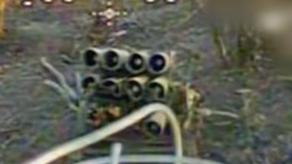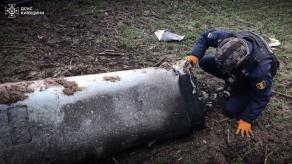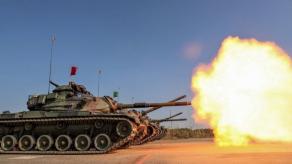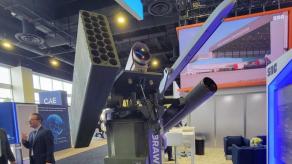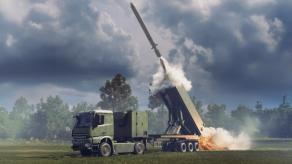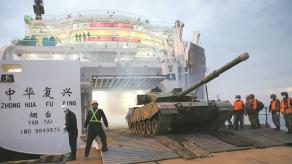According to the Flight Global, Part aircraft, part guided munition, the Anduril’s Roadrunner is a small, twin-engined jet that launches vertically to fulfill air defence or intelligence, surveillance and reconnaissance (ISR) missions, but can also return to base and land vertically for refuelling and reuse on subsequent flights.
Anduril founder and chief executive Palmer Luckey unveiled the new concept on 30 November at the company’s headquarters in Costa Mesa, California.
Read more: Overview of UAVs the US to Send to Ukraine: ALTIUS-600, Jump 20, Switchblade 600 and CyberLux
“We’ve done a lot of tech development to make this possible and practical,” says Luckey.
Roadrunner to an extent defies categorisation, incorporating aspects of both a precision-guided munition and an uncrewed aerial vehicle into a single platform that can deliver lethal effects in a reusable package
The company has spent the past two years developing Roadrunner. Among the innovations that went into the design is an entirely new jet engine, which Anduril developed internally.
“It’s the most power-dense jet turbine engine in the world that’s ever been built… volumetrically speaking,” says Luckey. “The amount of thrust that it makes for the size of engine is truly unparalleled.”

Anduril is not sharing much about the engine specifications, or even the powerplant’s name. Luckey says the company decided to produce its own engine after not finding an existing product compatible with the cost, size and capability requirements for Roadrunner.
Standing at roughly 1.5m (5ft) tall when resting vertically, the Roadrunner is powered by two of the turbojet thrust vector engines, which run on standard jet fuel.
The vehicle can be configured with an ISR sensor package or a high-explosive proximity fuse warhead, which would detonate to destroy incoming threats, along with the Roadrunner, which is designated Roadrunner-M in its lethal configuration.
Luckey says the new vehicle is capable of reaching “high subsonic speeds” and “high-g” manoeuvring.
Anduril believes the Roadrunner concept can fill a niche that currently stands empty in military air defence – a platform capable of defending against numerically dense airborne threats, which can be cheaply and easily produced in large quantities.
“There just wasn’t a reliable capability available to bring these types of threats down,” says Anduril chief strategy officer Christian Brose.
Such threats could come in the form of cruise missiles or so-called “kamikaze drones”, which have been fired into Ukraine by russia in the hundreds since Moscow invaded in 2022.
While currently deployed air defence systems such as Raytheon’s Patriot and NASAMS platforms can protect against such attacks, they fire sophisticated guided missiles with a high cost per shot and limited production capacity.
Cheaper, simpler air defence systems can protect against commercial quadcopter drones and small UAVs, but are not effective against fast-moving cruise missiles and UAV-style munitions like the Iranian Shahed-136, dozens of which Russia has fired into Ukrainian cities during single attacks.
Roadrunner’s twin jet engines are powered by conventional jet fuel, which Anduril say can be topped off by operators in the field for repeat flights
With a current price point of “low six figures” per unit and the goal of driving costs even lower, Luckey says the Roadrunner is cheap enough to be deployed en masse, preserving high-end air defence platforms for more serious threats.
Anduril already has “dozens” of Roadrunners flying, according to Luckey, with an active assembly line at the company’s Costa Mesa headquarters preparing to churn out hundreds of the interceptors.
The company is under contract with an unnamed US government customer, who Luckey says has already “operationally assessed” Roadrunner. Competitor Raytheon is currently supplying the US Army with an expendable UAV interceptor called the Coyote, whose name Luckey admits influenced the moniker his company selected for Roadrunner.
Read more: What EW Systems and "Drone Killers" Has Ukraine Received to Counter Lancets and Shahed-136 Combat UAVs?






